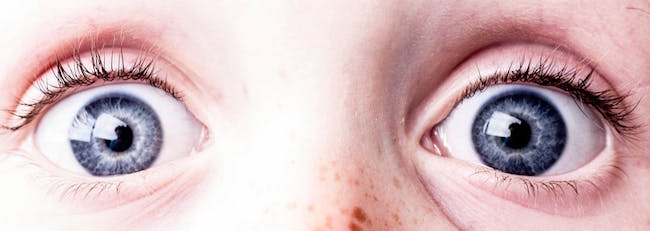Batten disease is a recessive genetic disorder. This means that a child needs to inherit the mutant gene from both parents before they will get the disease. The mutation in the gene means that the protein made from from the gene will be either absent or inactive.
If one parent passes on the mutant gene and the other a normal gene, then there will be enough normal protein for the child's cells to function properly.

Blue eyes are another example of a recessive genetic 'disorder', but not a serious one! They are the result of having two mutant/inactive copies of a gene responsible for brown pigmentation in the eyes.
Finding the mutation in a family with a recessive genetic disorder
This tree of a family affected by a recessive genetic disorder shows that some members must be carrying the mutant gene. They have passed the disorder to their children, but they do not have the disorder themselves. Remember, both parents of an affected person must carry the gene.

Squares are male and circles are female. Black circles and squares are family members affected by the disorder. Double lines indicate in-family breeding. The roman numerals on the left hand side are the generations.
Since 1, 2, 5, and 7 of generation V have the disorder, they must each have two mutant genes (-/-). Their parents (IV 1, 2, and 3, and III 7) must have one good gene and one mutant gene each (+/-).
- What can we tell about the other people?
- Is there anything we can guess?
Genetic testing

We use genetic testing to find out what mutation is present in a specific gene.
Because families can have genetic disorders with similar symptoms but caused by different mutations in the same or different genes, each family needs to be assessed separately.
There are now hundreds of different genetic tests available, each designed to detect a specific mutation or analyse multiple genes to determine the risk of developing a disease or disorder.
People who come from families with a specific genetic disorder may decide to be tested prior to having children. If they and their partner both carry the gene, they may decide not to have children. If they do decide to have children, they may have a test early in pregnancy to find out whether the foetus is affected and then decide whether or not to abort.
Before getting tested for a genetic disorder, people go through a counselling process to make sure they are properly prepared to make any unpleasant decisions afterwards.
- Can you think of any reasons why, after counselling, a person may decide not to have a genetic test done?
Learn more about genetic disorders on the Learn.Genetics website
Learn more about studying genetic diseases on the Science Learning Hub
Next: Gene therapy - a cure for Batten disease?
Previous: What causes Batten disease?